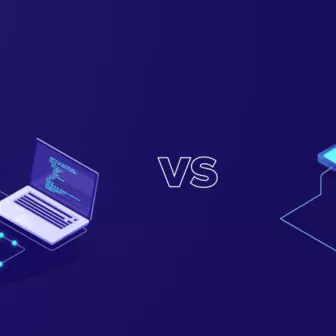Some research forecasts that cloud services will contribute nearly $500 billion to global revenues.
Software development projects are already adopting the microservices approach and changing the dynamics of development. Businesses are taking this plunge from a monolithic approach to cloud environments to have a futurist intent of growth.
However, the evolution of cloud-native involves a lot of homework and pre-transitional changes.

Emergence of Cloud-Native
The shift to cloud-native is still in its early stage. The industry is still on the learning curve where the intricate architecture is posing challenges.
Since the infrastructure comes with enormous complexity, the right kind of tools is required to untangle it. Service mesh is one of these devices that offer an infrastructure layer for handling service-to-service communication. Netflix was one of the early adopters who implemented service mesh as an array of lightweight network proxies five years ago.
6 Steps to Transition
#1 Execute the Plan
For every successful transition, planning is the first key step. But here’s a catch: what should be the basis of your plan? Should it be technology-centric or business-centric?
In the case of cloud-native, your priority should be your customers, i.e., business-centric approach.
Convene the right team that is ready for the transition with clear objectives and expectations. The development team should also align with the business goals of the organization and execute the phases of the transition accordingly.
It is wise to let technology take a back seat in the planning phase and make the business’s vision the focal point.
#2 Break Down the Silos
Application development is commonly shared in events like software development, testing, project management, and other IT operations. However, each process has its own set of tools and communication modes. When the services overlap, the tools don’t assimilate or sync together. Therefore, DevOps as a methodology was introduced to break these silos and cultivate a culture that focuses on high-quality deliverables with a minimum level of friction. The aim of frequent releases can be achieved with DevOps and its principles that provide autonomy and accountability with the teams.
#3 Continuous Delivery
Once the DevOps practices are adopted, the next step is to take charge of continuous delivery (CD). Only with CD, your benefits of cloud-native architectures can be unleashed. It is a significant step in the transition as it provides a valuable response from the improved frequency of delivery cycles and keeps the feedback loop in check.
#4 Decompose Monoliths
It is evident that the monolithic architectures do not fit in the cloud environments. The swift and fast pacing cloud seems to be incompatible with the traditional infrastructure. Also, it doesn’t provide the elasticity and enough support for the deployment to take place.
#5 Services
Essentially, a cloud-native architecture is a service-based architecture. Thus, the application is also deployed as a collection of services. This means that the applications should be independently accessible and exposed in order to be effectively leveraged by the cloud environments.
#6 Decouple the Data
After decomposing the monolithic applications, the next step is to decouple the data. This will allow the data to be stored and processed in a cloud environment. Restricted data doesn’t go well with the permissible cloud computing principles. You will be able to adequately add more benefits of cloud-native to your business objectives by decoupling data in a systematic manner.
The Shift Challenge
The transition births few challenges as well. Implying a significant shift in the architecture, the security, speed, and cost take a hit. An overall view of the transformation from traditional to cloud-native is required to keep these challenges in check.
Following are some of the key aspects to consider:
Business Goals
The implementation of cloud-native has to be justified in terms of your business and its mission. Not always will the cloud environments prove to be an asset to the company if there is no IT budget for it or there is limited flexibility for its execution.
Vendor Complications
Selecting the cloud provider is another tricky decision to make. There is a range of parameters on which you can choose a suitable provider for your organization. Characteristics like monitoring, operating systems support, ease of migration facilities, and APIs are a few of them that can ensure that you pick the right platform and do not end up in vendor lock-in situations.
Networking and Security
From user identification to network encryption, the cloud provider should cover all aspects of your services. Also, issues like latency (cold start) and network security should be a priority before committing to the cloud.
Portability
Ensure that you have ease when porting your metadata and configurations within the environment. It can notably improve your transition at a later stage.
Cultural Shift
Apart from the technical security and transition, the teams and resources also undergo a cultural shift which should happen smoothly in order to make the cloud-native transition a success.
Conclusion
Of course, there will be challenges that will demand an investment of time and money. In terms of infrastructure and the microservices approach, the cloud-native will require new tools for the operations, like service mesh.
However, the long-term potential of the cloud will change the paradigm in an efficient way. As an enterprise, you will be able to execute magnifying advantages over a period of a long time.
Subscribe
Related Blogs
Serverless vs Managed Services: Which One to Choose

When you decide to build an application in the cloud, you need to consider several factors. One of the most important…

Over the past few years, the cloud industry has gone through an extreme change with the transformation of serverless…
Putting The Serverless Trend Under a Microscope

Flexible. Scalable. Economical. These terms essentially sum up the advantages of serverless computing, an architecture that…




